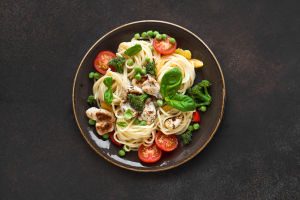Among many other things, Japan is famous for its food. In fact, some Japanese dishes are probably one of the better-known features of this country. Sometimes, the many amazing (and oftentimes unique) Japanese sweets that populate Japanese culinary culture sometimes go unnoticed.
While Japanese cuisine is reach of sweets such as cakes, baked goods, and pastries, you’ll find that many of the “very Japanese” sweets are wagashi. Wagashi are sweet because they are eaten with green tea. And they are mainly made from only a few ingredients. They are rice, wheat flour, azuki (small red bean) and sugar. Japanese confections use sugar, but doesn't use fat such as butter and cream. Therefore, most Japanese confections have lower calories than Western confections. There are many types of wagashi, read on to discover what these are—much deliciousness awaits!
1. Dorayaki
Dorayaki is a favorite traditional Japanese sweet for people of all ages in Japan, from small children to the elderly, and it’s even the prefered snack of the beloved animated character Doraemon. This dessert consists of two small pancakes filled with sweet azuki red bean paste. The name comes from its shape, which resembles a “dora”, or Japanese gong, and was created by a Tokyo dessert maker in the early 1900s.
2. Mochi
Mochi is a type of Japanese wagashi made from sticky rice that can be served either savory or sweet. Glutinous rice is pounded with a heavy mallet until it becomes a paste, and is then combined with other ingredients and molded into a desired shape. Mochi comes in a range of varieties, such as daifuku, a rice cake filled with red bean paste; sakura mochi, a rice cake wrapped in a salted cherry blossom leaf; and kusamochi, a rice cake flavored with Japanese mugwort. Mochi is often eaten on special occasions, and has been a part of the Japanese New Year’s festivities since as early as the Heian period.
3. Dango
While mochi is made from rice that has been pounded into a paste, dango are small dumplings made from sweet rice flour, and have a slightly chewier texture. To make this type of Japanese wagashi, rice flour is mixed with hot water to form a dough and then shaped into dumplings, which are boiled, skewered, and grilled. Sesame seeds are a common addition to the rice flour, to produce the nuttier-tasting “goma-dango”. Dango are irresistible as-is, or drizzled in thick and sweet soy sauce.
4. Monaka
Monaka are traditional Japanese sweets consisting of two crisp and airy wafers made from sticky rice that are sandwiched around sweetened red bean paste. The wafers are typically crafted into the shape of a flower such as the cherry blossom, chrysanthemum, or plum blossom. In addition to anko, sweetened adzuki red bean paste, the filling can also be a paste made from seasonal fruits or sweetened chestnuts.
5. Daifuku
Daifuku are a type of small cake made with a piece of soft mochi wrapped around sweetened bean paste, or mixed with whole beans, and are usually colored in white, pink, or green. The filling may be either anko red bean paste or shiro-an, a white bean paste, and may also include a piece of fruit. A popular daifuku variety is ichigo daifuku, made with red bean paste and a whole juicy strawberry. Daifuku cakes are often dusted with katakuriko starch to prevent them from sticking.


